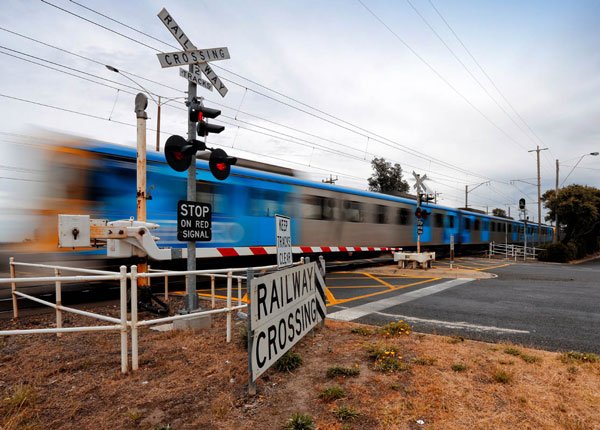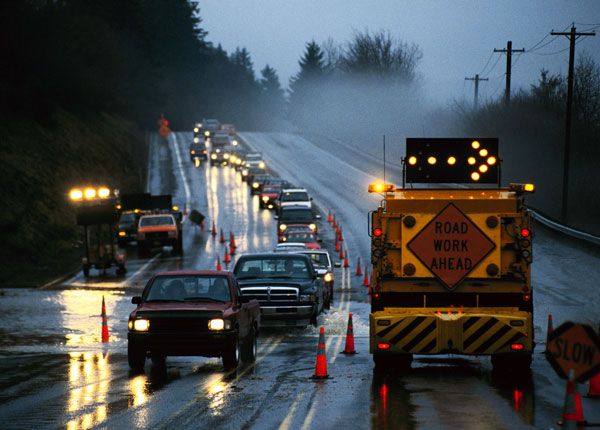
Railroad Crossings for Dummies: Signs, Lights and Safety Rules
Updated Dec. 11, 2020Despite an increase in active warning signals and other safety equipment around railroad crossings, America has seen roughly 2,000 vehicle-train collisions each year since 2009. In 2017, these collisions resulted in 274 death and 807 injuries, the vast majority of which involved the occupants of the vehicle which collided with the train.
Crossing railway lines is incredibly dangerous, as the sheer size and weight of trains mean that motorists will always come off worse in a vehicle-train collision. You are nearly 20 times more likely to be involved in a fatal collision at a railroad crossing than in any other vehicle-to-vehicle collision. Do not take chances or engage in risky behavior around railway-highway intersections. In these situations, impatience or poor concentration could cost you your life – not to mention the lives of your passengers.
Better driver education is the best way to combat deaths and injuries at railroad crossings. Passive warning signs and active signals make crossing easier, but your safety at railroad intersections is ultimately your responsibility.
Railroad crossing safety
Advanced warning signs will notify you when you are approaching a railway line. Always be prepared to slow down and stop at least 15ft away from the railroad crossing. You must look for trains in both directions on each track if more than one track is present. Never proceed across railway tracks if you see any of the following:
- A flashing red light. This indicates that a train is approaching.
- A flagman warning of an approaching train.
- An approaching train is visible on the tracks or has given an audible signal
- A train had just gone through the crossing. This does not mean the danger has passed. Another train may be about to pass through behind, or on another track where one is present.
- The crossing gate is closed.
Do not stop on train tracks
Drivers must never stop their vehicle on railway tracks, even if it does not appear that a train is approaching the crossing. If any of this safety equipment is malfunctioning, it may appear safe to cross when a train is in fact approaching.
When in a line of slow-moving traffic waiting to cross the tracks, do not proceed until you are certain there is enough space on the other side of the tracks to accommodate your vehicle. Drivers in the queue behind you may pull up to the crossing and block your ability to reverse out of the path of an oncoming train. Many vehicle-train collisions are caused by this mistake.
 Never stop on railroad tracks. If your car stalls on the tracks and you cannot restart it, get out and try to push the car off the tracks. If you cannot push the car off the tracks, get help.
Never stop on railroad tracks. If your car stalls on the tracks and you cannot restart it, get out and try to push the car off the tracks. If you cannot push the car off the tracks, get help.Going around a railroad crossing gate
Attempting to go around or underneath a closed crossing gate is one of the deadliest mistakes a motorist can make. Do not do it under any circumstances. The track may seem to be clear in both directions, but in the time that it takes to maneuver your vehicle that could change. Keep in mind that warning lights will flash when a train is roughly 20 seconds away from the crossing.
Drivers who attempt to go around a railroad crossing gate often do so because they can see an approaching train, yet it appears to be moving slowly. Trains are often traveling at a far greater speed than is apparent to motorists at a crossing and will close the distance quickly.
Keep in mind that you will be legally liable for any injury, death or property damage that occurs, should you choose to ignore warnings and drive around a closed gate.
Shifting gears on railroad crossings
Always proceed over a railroad crossing with enough speed that your vehicle’s momentum will carry it across, rather than creeping forward in first gear. 10mph is an ideal speed at which to cross a railroad. Approaching at a higher speed could cause damage to your vehicle, as railroad crossings are often not level. Do not shift gears while crossing a railway track, as it could cause your vehicle to stall.
Stalling on railroad tracks
Every driver must know what to do if they stall or become stuck on train tracks. Few situations are more traumatic than being at the wheel of a car that has stalled on a railroad crossing. Do not panic, follow these instructions:
- 1

Get out of the car, immediately.
This includes all passengers. Give assistance to children, babies, disabled passengers and the elderly. - 2

Move away from the train tracks, immediately.
You should do this even if you cannot see or hear an approaching train. - 3

Look for the emergency notification system sign near the crossing.
Call the number provided on this sign and let them know about the stalled vehicle, so they can warn approaching trains to stop. - 4

Run in the general direction of the train but away from the tracks at a 45-degree angle, if a train is approaching your stalled vehicle.
If you run away from the train in the same direction it is traveling, you may be struck by flying debris from your vehicle.
Crossing multiple tracks
When crossing multiple tracks, always check for trains approaching from both directions, on each track. You should approach every crossing expecting to see a train and only proceed to cross when you are certain that no train is in sight, in either direction.
You are most at risk when using a familiar railroad crossing, through which trains pass infrequently. In this situation, you will not be accustomed to encountering trains and may not check properly before crossing. Understand that freight trains do not follow set schedules; they may pass through at any time, even if you have never encountered a train at the time of day previously.
Do not try and beat an approaching train through a railroad crossing – this is a race you will never win. Trains are often closer than they appear.
Crossing rules for trucks and buses
Large, slow-moving vehicles and passenger vehicles over a certain size must always stop at railroad crossings, irrespective of whether a train appears to be approaching. Be aware that farm vehicles, school buses, cargo tanks and other large commercial vehicles may stop up to 50ft away from a railway crossing. You must slow down and be ready to stop when approaching such a vehicle at a crossing; do not attempt to pass them.




